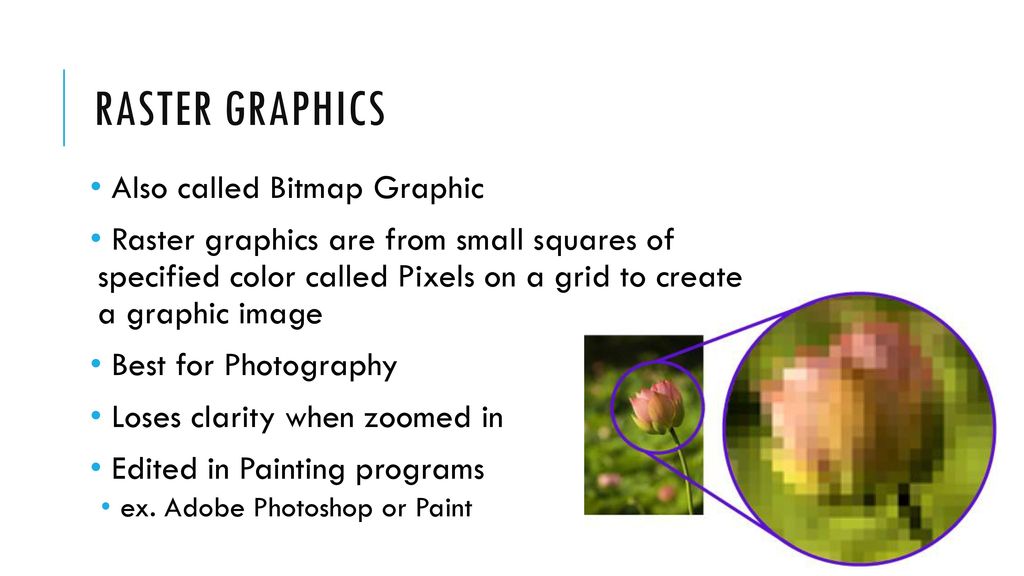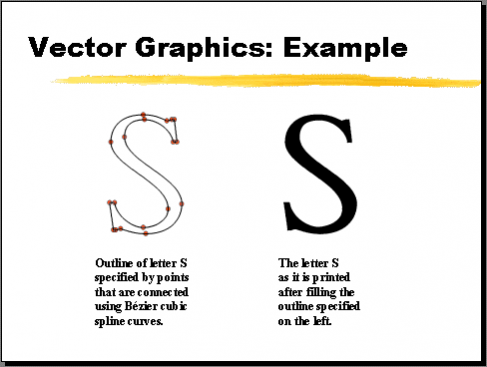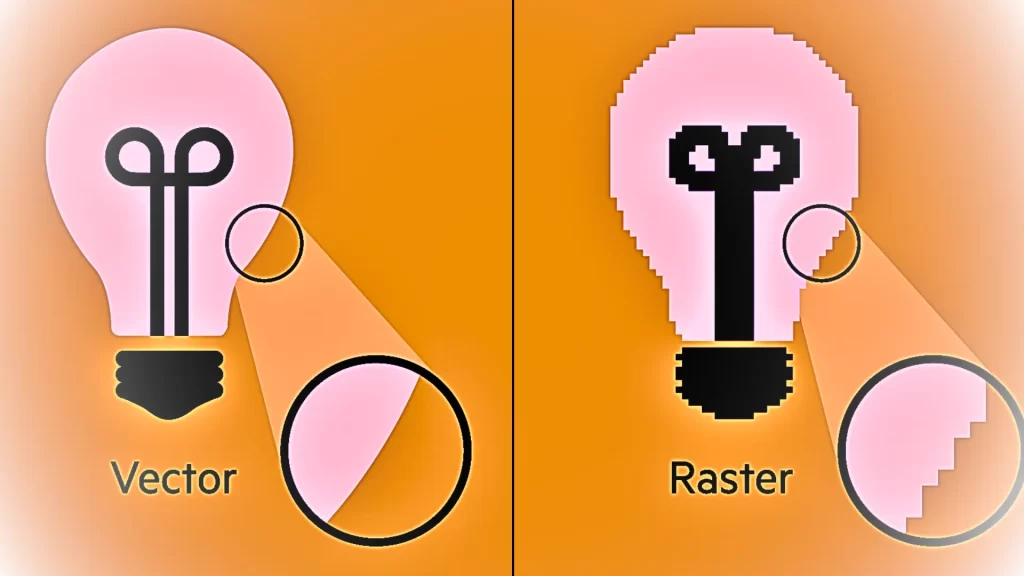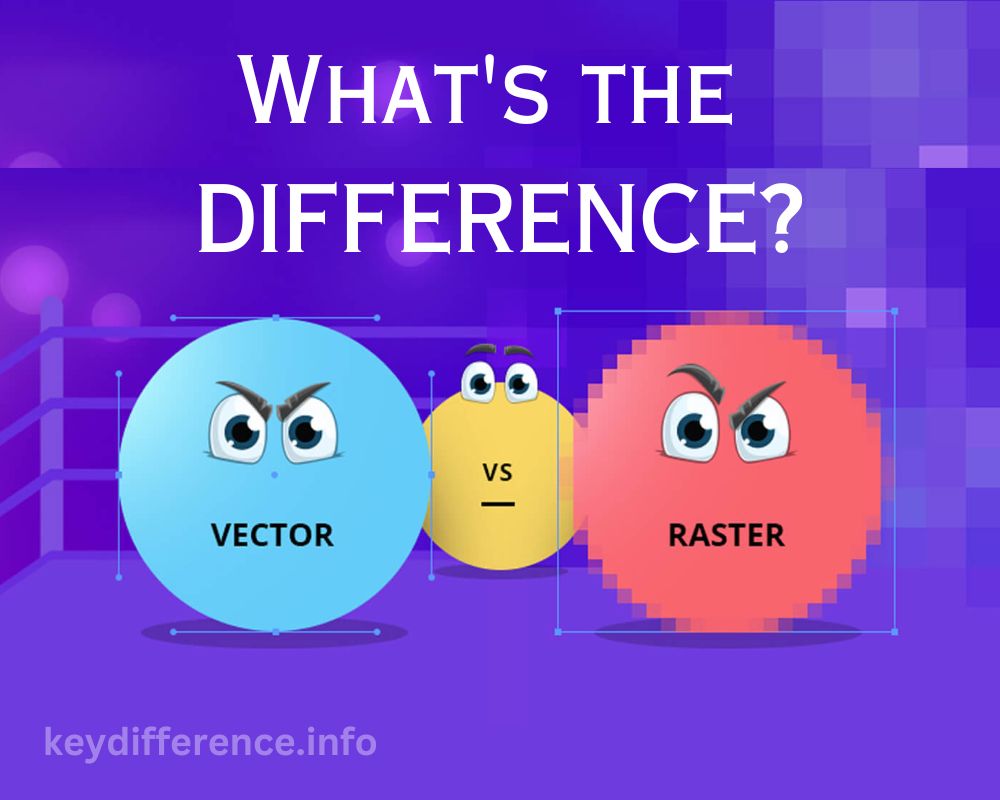Raster and Vector Graphics are two distinct types of digital images utilized for computer graphic design.
Raster graphics, also referred to by the name of bitmap pictures, consist of pixels that are arranged in a grid. Each pixel is a record of its brightness and color. Raster images are made by scanning or capturing photographs or by making digital illustrations or paintings using software such as Adobe Photoshop. The raster images are ideal to represent complex, realistic images, like photographs.
Vector graphics are made by mathematical formulas that create lines as well as shapes and colors. They are made up of items that may be scaled up and down without affecting their quality because they do not depend on resolution. They are easy to edit and changed and are a versatile choice for graphic designers as well as artists.
What exactly is Raster Graphics?
Raster graphics, also referred to as bitmap images are digital images composed of a grid made up of tiny squares, referred to as pixels. Each pixel of a raster graphic is a record of its brightness and color. Raster graphics are designed with software programs like Adobe Photoshop or by capturing or scanning images.
A Raster quality photo is measured by its resolution which is measured in terms of pixels per inch (PPI) or dots per inch (DPI). High-resolution images contain greater pixels, which means they have greater clarity and detail, they also mean bigger file sizes.

The raster graphics are perfect to represent complex, realistic images with fine details as well as smooth color transitions are needed. since they are resolution-dependent, raster graphics cannot be scaled up or down without losing quality. That means that when an image of a raster is increased by a few pixels, each one becomes visible, and the image appears blurred or pixelated.
What exactly is Vector Graphics?
Digital vector graphics comprise images constructed using mathematical formulas that define shapes, lines, and colors. Contrary to raster graphics comprised of a grid of pixels vector graphics are made up of objects that are easily altered, scaled up or down, and altered without sacrificing quality.
Vector graphics are designed with software programs such as Adobe Illustrator or Corel DRAW. They are perfect for simple graphics like logos, typography, or illustrations. Vector graphics are easily modified and edited and are a versatile option for graphic designers and artists.

The quality of an image that is vectorized is not dependent on resolution since algorithms used make the image can allow the image to scale up and down without sacrificing quality. That makes them suitable for situations where images require printing in various sizes or displayed on screens that have different resolutions. But, they aren’t ideal for displaying real-looking, complex scenes like photos, as they’re typically not able to capture the precise detail and shading that is required to create such pictures.
Raster as well as Vector Graphics More information
Here’s more details about vector and raster graphics:
Raster Graphics:
- Graphics called “raster” are often referred to as bitmap graphics.
- The most common types of raster graphics files comprise JPEG, PNG, GIF, and BMP.
- Graphics with raster are ideal to represent complex, realistic images, such as photos.
- Graphics for raster require a high resolution to ensure quality of the image, especially for printing media.
- Raster graphics editing software comprises Adobe Photoshop, GIMP, and Corel PaintShop Pro.
Vector Graphics:
- Vector graphics are often referred to as geometric graphics.
- Common types of vector graphics files comprise AI, EPS, SVG and PDF.
- Vector graphics are great for making simple graphics such as typography, logos, and illustrations.
- Vector graphics are resolution-independent, meaning they can be scaled up or down without losing quality.
- The software for editing vector graphics includes Adobe Illustrator, Inkscape, and CorelDRAW.
Both vector and raster graphics have strengths and strengths, and the selection of which one to choose depends on the particular application or task. In certain situations it might be necessary to utilize a mix of both kinds of graphics. For instance logos can be designed as a vector image, and it is then stored in raster file format for use in specific applications or in certain contexts.
What is the difference between Raster and Vector Graphics?

The most significant differences between vector and raster graphics are:
- Scalability Vector: Graphics can be scaled upwards or downwards without sacrificing quality, whereas the raster graphics are not able to be scaled. When raster images are increased in size, all the pixels will be visible while the picture appears blurred or pixelsated.
- Resolution: Raster graphics are resolution-dependent, meaning that their quality is determined by their resolution. Images with higher resolutions have greater pixels, which means they have greater clarity and detail, they also have larger size files. Vector graphics, on the other hand, are resolution-independent, and can be scaled up or down without losing quality.
- File size: Graphics with raster generally have larger files than vector graphics because they require more data to hold the details of every pixels. Vector graphics are generally smaller, because they are only storing mathematical formulas that determine the shape and colors in the images.
- Editing capabilities: Vector graphics are able to be editable and are able to alter sizes, hues and form of the objects in the image. Vector graphics can also be edited the process is usually more complex and can cause a loss of quality.
Applications across different areas raster graphics are used to create intricate, realistic scenes like photographs, whereas vector graphics are great to create simple graphics such as logos, typography, or illustrations. Vector graphics are commonly employed in graphic design while raster graphics are utilized in digital painting, photography as well as other applications in which fine lines and seamless shifts in colors are necessary.
Let’s see the comparison chart about Raster and Vector Graphics
| Comparison Criteria | Raster Graphics | Vector Graphics |
|---|---|---|
| Definition | Digital images made up of a grid of pixels | Digital images made up of mathematical formulas defining lines, shapes, and colors |
| Scalability | Cannot be scaled up or down without losing quality | Can be scaled up or down without losing quality |
| Resolution | Resolution-dependent, quality determined by the number of pixels per inch (PPI) or dots per inch (DPI) | Resolution-independent, quality not dependent on PPI or DPI |
| File Size | Larger file sizes due to the need to store information about each pixel | Smaller file sizes since only mathematical formulas are stored |
| Editing Capabilities | Can be edited, but process is often more difficult and may result in a loss of quality | Easily editable and manipulable to change the size, color, and shape of the objects within the image |
| Applications | Best suited for representing complex, realistic scenes such as photographs | Ideal for creating simple graphics like logos, typography, and illustrations |
Note: This is a generalized comparison between raster and vector graphics. Some specific applications or scenarios may have different requirements, which may make one type of graphics more suitable than the other.
Commonalities among Raster Vector Graphics and Vector Graphics
In spite of their differences in appearance, there are a few similarities between vector and raster graphics:
- Both can be utilized to create digital images both the vector and raster graphics are utilized to create digital images that may be stored in different formats and utilized in a variety of applications.
- Both can be edited although the editing process differs between vector and raster graphics, both can be edited with software tools. For instance, you could make use of software for photo editing to alter the brightness and color of a raster photo or employ vector graphics software to alter the size and manipulate vector images.
- Both can be utilized both in print and digital media. Raster and vector graphics are both able to be utilized in digital and print media, based on the particular requirements of the undertaking. For instance, raster graphics can be printed on media like newspapers and magazines and vector graphics are typically used for logos, icons and other basic graphics on mobile and web sites.
- Both require skill and experience to produce the best graphics: Whether working with vector or raster images, producing high-quality digital images takes skill and knowledge. Artists and designers must have an knowledge of composition, color theory and tools for software to produce visually appealing images.
Selecting the Best Type of Graphic
When deciding on the best kind of graphic to use to suit a specific project or application.
It is important to take into consideration the following aspects:
- purpose: The purpose design’s purpose? Do you want it to depict a photograph or a realistic scene or is it a basic concept such as a logo, or an illustration? Graphics made of vectors are the best for illustrating intricate, realistic scenes while vector graphics are great for simple graphics such as logos, typography and illustrations.
- Scalability: Does the image require scaling either up or down?
If this is the case vector graphics are the best option since they can be scaled up and down without sacrificing quality. Vector graphics are pixelated and blurry when increased. - Resolution: Is the image be printed or used in digital media? If it’s going to be printed on and raster graphics, high resolution are required to make sure that the image is clear and sharp. If the image is going to be utilized in digital media vector graphics are an excellent option, since they don’t need a particular quality and are made to be scaled to the size of the size of the screen.
- Editing: Does the graphic require editing or altered? If so, vector images are the ideal choice because they are editable and can be modified to alter dimensions, colors and even the shape of elements within the image. Vector graphics can also be edited, editing is usually more complex and can cause a loss in quality.
- picking: Picking the best type of graphic will depend on the particular requirements of the application or project. While raster graphics are ideal to represent intricate, realistic images Vector graphics are great for simple designs that require to be editable and scaleable.
The Summary Raster as well as Vector Graphics
Raster and Vector Graphics represent two distinct types of digital images utilized in different applications. The raster graphics consist of pixels that are ideal for illustrating complex real-looking scenes, such as photographs.
Vector graphics are, on the other hand are based on mathematic equations that are great to create simple graphics such as typography, logos, and illustrations. Both graphic formats, raster and vector, can be edited with software tools, and are able to be utilized in print as well as digital media. When selecting between raster or vector graphics, it is important to think about factors like scaleability, resolution, as well as editing needs to make sure the format you choose will meet the requirements of the project.

